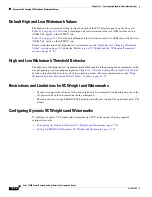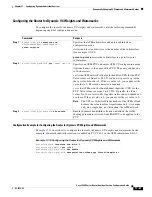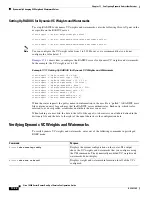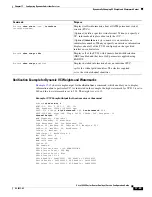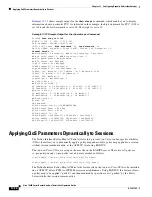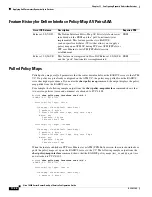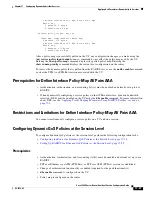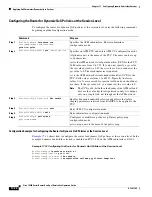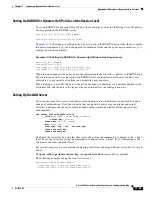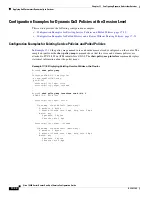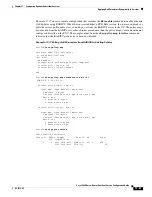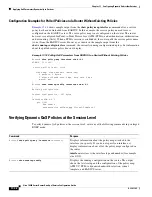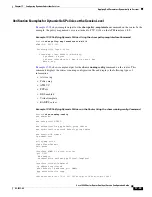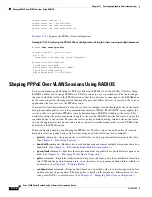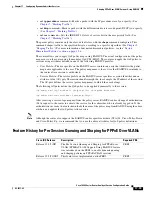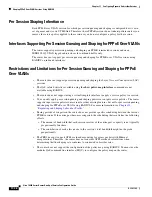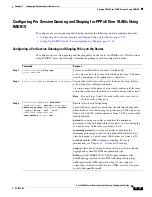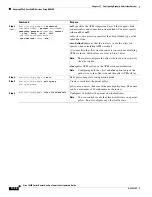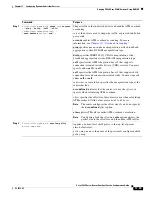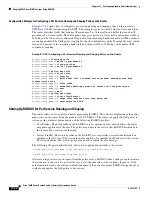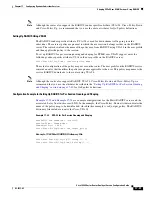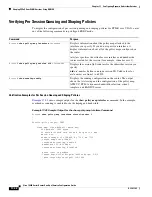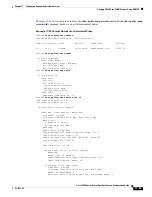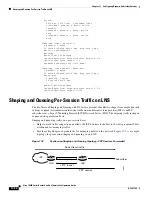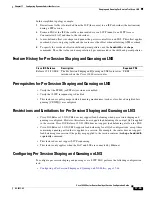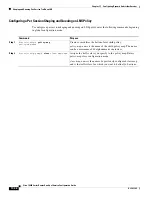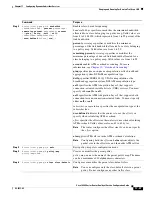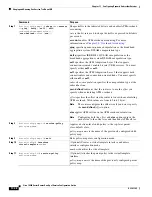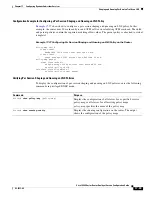
17-34
Cisco 10000 Series Router Quality of Service Configuration Guide
OL-7433-09
Chapter 17 Configuring Dynamic Subscriber Services
Shaping PPPoE Over VLAN Sessions Using RADIUS
radius-server timeout 15
radius-server key 7 060506324F41
radius-server vsa send accounting
radius-server vsa send authentication
!
Example 17-21
displays the PPPoA client configuration.
Example 17-21 Displaying the PPPoA Client Configuration Using the show running-config Command
Router#
show running-config
!
interface ATM4/0.1 point-to-point
pvc 1/101
encapsulation aal5mux ppp Virtual-Template1
!
interface Virtual-Template1
ip address negotiated
peer default ip address pool POOL1
ppp chap hostname userid
ppp chap password 7 030752180500
!
Shaping PPPoE Over VLAN Sessions Using RADIUS
Per Session Queuing and Shaping for PPP over Ethernet (PPPoE) over Virtual LANs (VLANs) Using
RADIUS enables you to shape PPPoE over VLAN sessions to a user specified rate. The router shapes
the sum of all of the traffic to the PPPoE session so that the subscriber’s connection to the DSLAM does
not become congested. Queuing-related functionality provides different levels of service to the various
applications that execute over the PPPoE session.
A nested, two-level hierarchical service policy is used to configure session shaping directly on the router
using the modular quality of service command-line interface (MQC). The RADIUS server applies the
service policy to a particular PPPoE session by downloading a RADIUS attribute to the router. This
attribute specifies the policy map name to apply to the session. RADIUS notifies the router to apply the
specified policy to the session. Because the service policy contains queuing-related actions, the router
sets up the appropriate class queues and creates a separate versatile management system (VTMS) link
dedicated to the PPPoE session.
When configuring queuing and shaping for PPPoE over VLAN sessions, the child policy of a nested
hierarchical service policy defines QoS actions using any of the following QoS commands:
•
priority
command—Assigns priority to a traffic class and gives preferential treatment to the class.
(See
Chapter 8, “Prioritizing Services.”
)
•
bandwidth
command—Enables class-based fair queuing and creates multiple class queues based on
bandwidth. (See
Chapter 5, “Distributing Bandwidth Between Queues.”
)
•
queue-limit
command—Specifies the maximum number of packets that a particular class queue can
hold. (See
Chapter 11, “Managing Packet Queue Congestion.”
)
•
police
command—Regulates traffic based on bits per second (bps), using the committed information
rate (CIR) and the peak information rate, or on the basis of a percentage of bandwidth available on
an interface. (See
Chapter 6, “Policing Traffic.”
)
•
random-detect
command—Drops packets based on a specified value to control congestion before
a queue reaches its queue limit. The drop policy is based on IP precedence, differentiated services
code point (DSCP), or discard-class. (See
Chapter 11, “Managing Packet Queue Congestion.”
)

